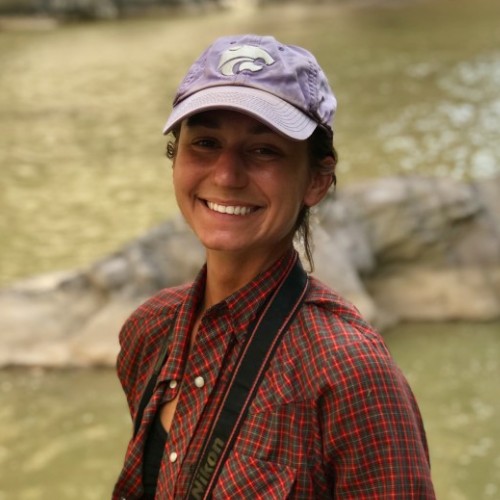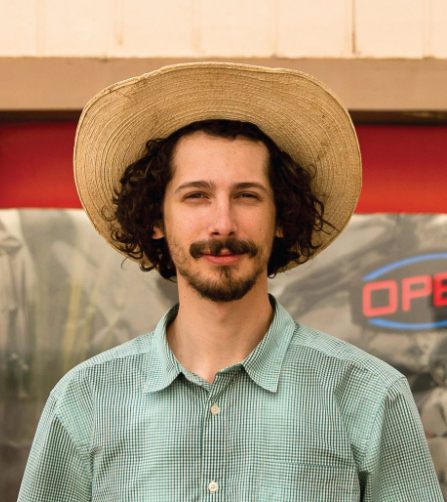Wild Research
This webinar series explores current research being done within the realm of Natural Resources throughout the Midwest. Undergraduate, graduate, and postdoctoral students will present on a range of topics including fish migration, prairie composition, and the use of photography in understanding watersheds.
Most events are Tuesdays online via zoom, 6:00 PM to 7:00 PM Central Standard Time. (Check listings below for exact details.)
Upcoming Events
Tuesday, February 27, 2024
An Examination of Proximity to Water and Minimum Woody Cover Requirements for Northern Raccoon Occupancy and Abundance in Kansas
Caleb Durbin, Kansas State University
6:00 PM - 7:00 PM
You’ve seen them before, those masked dumpster divers. The northern raccoon is a common trespasser that has made its home in both urban and rural environments. When it chooses its home, are there certain characteristics that it looks for, like closeness to water or number of trees? Kansas State University Master’s student, Caleb Durbin, will help answer all our questions.
Call for Presenters
Are you a undergraduate, graduate, and postdoctoral students doing research in natural resources? We want to hear about your work. Contact us to learn more about becoming a Wild Research presenter.
Contact Us
Amy Keigher, Natural Resources Agent
Past Events
Tuesday, February 13, 2024
Space-to-Event models used to estimate elk and deer abundance and elk occupancy models on Fort Riley, KS
Domninque Byrd, Kansas State University
There are a variety of methods that can be used to estimate abundance for a particular species. Some involve multiple sampling efforts and tagging animals, while others rely on helicopter surveys. In this edition of Wild Research, we’ll learn about Space-to-Event models, and how they can help estimate elk and deer abundance on Fort Riley, KS. Join Domnique Byrd, Kansas State University Master’s student, as he describes his fascinating research.
Thursday, February 1, 2024
Flying Squirrels in Eastern Kansas
Brandon Bernhardt, Kansas State University
Flying squirrels in Kansas? You better believe it! Because of their nocturnal habits, you might not have ever seen one. If you’re looking for an in-depth discussion on our furry, gliding neighbors, then you’re in luck! Kansas State University Master student, Brandon Bernhardt is here to answer all of your flying squirrel questions and introduce you to research being done on these rodents.
Tuesday, January 9, 2024
Colorado Pikeminnow in the San Juan River and the Use of Telemetry in Fisheries Research
John Cleveland, Kansas State University
Have you ever wondered how big the largest minnow in the United States is? If you said nearly 6 feet long and up to 80 pounds, you would be correct! The Colorado pikeminnow, currently listed as endangered by the US Fish and Wildlife Service, is known to migrate up to 200 miles each spring for spawning throughout rivers in the southwest. Researching this travelling fish requires the use of telemetry and tagging. Join John Cleveland, Kansas State University Master’s student, as he discusses his research on the Colorado pikeminnow in the San Juan River.
Tuesday, December 12, 2023
Evaluating Relationships between Grassland Loss, Woody Encroachment, and Pesticide use on Grassland Bird Populations
Rachel Rusten, Kansas State University
Grassland birds are one of the most threatened group of animals on Earth. Habitat loss and pesticide use are two factors believed to negatively impact grassland bird populations, but to what extent? Join Kansas State University Master’s student, Rachel Rusten, as she evaluates the relationships between grassland loss, woody encroachment, and pesticide use on grassland bird populations.
Tuesday, October 10, 2023

The Effects of Time, Space, and Floral Species on Tallgrass Prairie Bumblebee Occurrence
Caroline Skidmore, Kansas State University
6:00 PM - 7:00 PM
Pollinators play a critical role in the success of many ecosystems across the globe, including the tallgrass prairies of Kansas. Within the tallgrass prairie, bumblebees are essential pollinators that aid in the reproduction of many forbs and grasses. Without them, our prairies would look very different. What factors play a role in the abundance of bumblebees across the prairie? Join Kansas State University Graduate Student Caroline Skidmore as she explores the effects of time, space, and floral diversity on the bumblebees of the tallgrass prairie.
Tuesday, September 12, 2023
 The Impacts of Nutrient Availability and Drought on the Phenology of Big Bluestem Grass
The Impacts of Nutrient Availability and Drought on the Phenology of Big Bluestem Grass
Anna Krause, University of Kansas
7:00 PM - 8:00 PM
Across the United States, many areas are facing record droughts while others are being flooded out of their homes. Climate change is impacting many in Kansas, including the state’s prairie grasses. Measuring these impacts may be the first step in understanding the long-term implications on prairie systems across the Midwest. Join University of Kansas graduate student, Anna Krause, as she discusses the impacts of nutrient availability and drought on the phenology of big bluestem grass.
Tuesday, August 22, 2023
 Platte Basin Timelapse: Investigating Watersheds through Timelapse Photography
Platte Basin Timelapse: Investigating Watersheds through Timelapse Photography
Dakota Altman, Plate Basin Timelapse and University of Nebraska
6:00 PM - 7:00 PM
What if you could use the tremendous power of photography and storytelling to see a watershed in motion and assist in policy and management decisions? Since 2011, the Platte Basin Timelapse team has been capturing the movement of water through the 90,000 square-mile basin from its headwaters along the Continental Divide in the Colorado Rockies to the river’s confluence with the Missouri River in eastern Nebraska. Join Dakota Altman, Producer and Instructor with Platte Basin Timelapse, as he shares the possibilities that timelapse photography brings to managing large water systems, including the Kansas – Lower Republican river basin found here in Johnson County.
